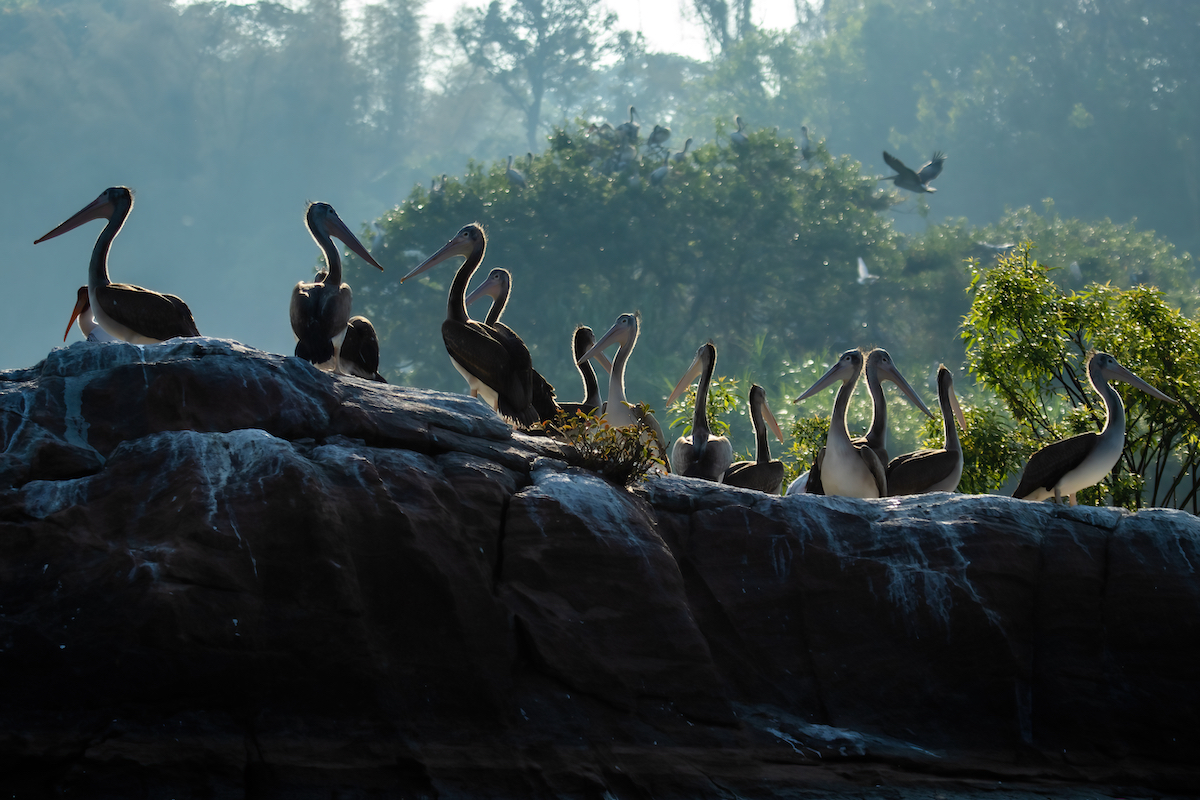Ranganathittu Bird Sanctuary (also known as Pakshi Kashi of Karnataka), is a bird sanctuary in the Mandya District of the state of Karnataka in India. It is the largest bird sanctuary in the state, 40 acres in area, and comprises six islets on the banks of the Kaveri river. Ranganathittu is located 3 kilometers from the historic town of Srirangapattana and 16 kilometers north of Mysore.
Ranganathittu’s islets were formed when an embankment across the Kaveri river was built between 1645 and 1648 by the then king of Mysore, Kanteerava Narasimharaja Wadiyar. These islets, originally numbering 25, soon started attracting birds. Dr. Salim Ali observed that the islets formed an important nesting ground for a large variety of birds, and persuaded the king of Mysore to declare the area a protected area in 1940.
Deb, Ravindra, and I took off at 4 AM to see this largest bird sanctuary in the state. The key to experiencing this place is to call one of the guys working there and get him to get your tickets for an early morning session before the crowd comes in. (Feel free to ping me for the details on this.).
Surprisingly this was my first ever visit (even if I had visited it as a kid, I have no recollection whatsoever). I felt like I was in Jurassic Park. The size of some of the pelicans was incredible. And you get so close to them while boating. For a few minutes, I had no clue which bird to focus on among the thousands roosting, feeding, and building nests.
Shot over 700 pictures, sorted it down to about 30. And, here we go.
Let’s start with the magestic Spot-billed Pelican. These guys are huge. I mean huuuuuuge. When they fly over, you are hear and feel their wing flap.




The Asian Openbills were found building their nest and feeding the young.




Painted Storks looked lovely in the morning light.




A decent number of Black-crowned night Herons were found too.

Eurasian Spoonbill is a lifer for me.

So is the Indian Cormorant.

Another lifer, Streak-throated Swallows were seen in hundreds and their nests are a piece of art. Shot this (first pic) from the phone to capture the number of nests under a rock.


I’ve mostly seen the Black-headed Ibis fly past. A close-up profile shot like this was new.

Cattle Egret with its little ones.

Pond Heron enjoying an early catch.

A couple of Stork-billed Kingfishers were a treat to shoot. The bill is as huge as their body. What a beauty.


Another lifer, a rare one – Great Thick-knee.


And, if one is tired of the winged friends, we got to see other interesting fellas too.



That’s it. It’s a wrap.
Not.
We were not done. Deb had read an article about a particular beeeater around where we were. We decided to check those guys out too.
It used to be a dhobi ghat used by washermen from the nearby village. But now, it’s a nesting site of an exotic bird species, the Blue-tailed Beeeater. The nesting area spread over 2.5 acres in Naguvanahalli, on the banks of the river Cauvery, close to Srirangapatna.
There were hundreds of these guys. Also, got to shoot a love story while we were…I mean they were at it.





And, finally as a bonus, got to see couple of Pied Kingfisgers fishing and my beloved White-throated came along to say hey too.




Ok. Now its a wrap!
No, seriously. That’s it.


It is a feast to the eyes. Morning sunlight added grace to many shots …
And the blue tailed beeeaters and the blog deserve high level appreciation.
The magic & mystery of planet earth seems most contained in the avian species. Your pictures describes them more than a million words can, and yet each snapshot capturing them.in different poses, heightens the mystery! Who they are, how they live, what do they see..and how they feel 🙂